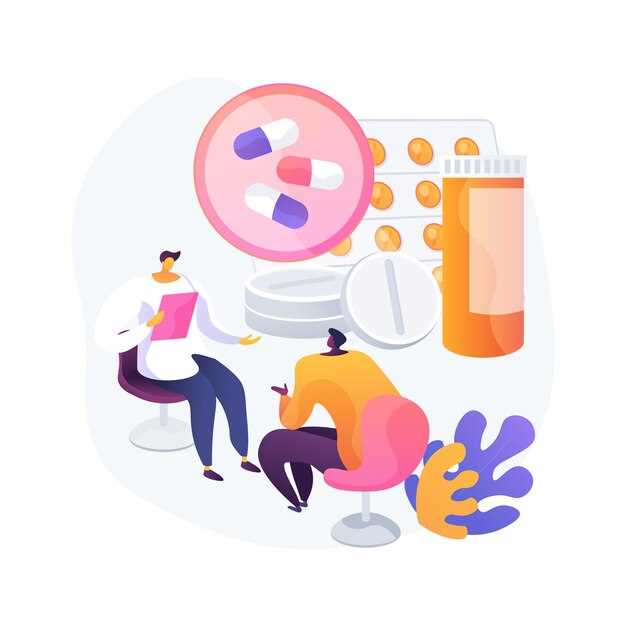
Are you taking Lexapro and Tramadol together? It’s important to understand the potential drug interactions between these two medications. Lexapro is a commonly prescribed antidepressant, while Tramadol is a pain reliever. When combined, they can have effects on your body that you may not be aware of. It’s crucial to consult with your healthcare provider to ensure that you are taking these medications safely.
Benefits
The combination of Lexapro and tramadol can lead to improved treatment outcomes in patients with certain conditions. Studies have shown that the two medications work synergistically to provide relief from symptoms such as depression, anxiety, and chronic pain.
Lexapro, an antidepressant, helps to balance neurotransmitters in the brain, while tramadol, a pain reliever, acts on the central nervous system to reduce pain signals. When used together, they can enhance the effects of each other, leading to better symptom control and overall quality of life for patients.
Patients taking Lexapro and tramadol may experience a reduction in symptoms such as low mood, fatigue, and physical discomfort, allowing them to function better in their daily lives. By addressing both mental health and pain issues simultaneously, this combination therapy can offer a holistic approach to treatment.
Improved treatment outcomes
Lexapro is known to improve treatment outcomes for individuals suffering from depression, anxiety disorders, and other mental health conditions. It works by restoring the balance of certain natural substances (neurotransmitters) in the brain, which helps alleviate symptoms and improve overall well-being.
Studies have shown that patients who take Lexapro as prescribed often experience significant improvements in their mood, concentration, energy levels, and overall quality of life. Many individuals report feeling more optimistic, motivated, and able to cope with stress and daily challenges.
By effectively managing symptoms and promoting a sense of stability, Lexapro can help individuals regain control over their lives and relationships. Improved treatment outcomes may include reduced feelings of sadness or hopelessness, increased ability to function at work or school, and enhanced social interactions.
It is important to note that individual responses to Lexapro may vary, and some patients may require adjustments to their dosage or additional support from healthcare providers. Regular monitoring and open communication with a prescribing physician are key to maximizing the benefits of Lexapro treatment and achieving sustainable improvements in mental health.
Side Effects

While Lexapro and tramadol are generally well-tolerated medications, they may cause side effects in some individuals. It is important to be aware of these potential side effects before starting treatment:
- Nausea
- Headache
- Dizziness
- Fatigue
- Insomnia
- Constipation
- Dry mouth
If you experience any severe or persistent side effects while taking Lexapro and tramadol, it is important to contact your healthcare provider immediately. They can provide guidance on how to manage these side effects or adjust your treatment plan accordingly. Always follow your healthcare provider’s recommendations for safe and effective medication use.
Potential risks to be aware of
When using Lexapro and tramadol together, there are certain potential risks that you should be aware of. These risks include:
1. Serotonin syndrome: The combination of Lexapro and tramadol can increase the risk of developing serotonin syndrome, a serious condition that can be life-threatening. Symptoms of serotonin syndrome include confusion, agitation, rapid heartbeat, sweating, shivering, and muscle stiffness.
2. Increased risk of seizures: Both Lexapro and tramadol can lower the seizure threshold, and when used together, the risk of seizures may be further increased. It is important to use these medications with caution if you have a history of seizures or are at risk for developing them.
3. Respiratory depression: Tramadol can cause respiratory depression, especially when taken in high doses or with other medications that depress the central nervous system. When combined with Lexapro, the risk of respiratory depression may be increased, particularly in elderly patients or those with pre-existing respiratory conditions.
4. Drug interactions: Lexapro and tramadol can interact with other medications, increasing the risk of side effects or reducing the effectiveness of one or both drugs. It is important to consult with your healthcare provider before starting or stopping any medications while using Lexapro and tramadol.
It is crucial to be aware of these potential risks and to discuss them with your healthcare provider before starting treatment with Lexapro and tramadol. Monitoring for any signs of adverse reactions and seeking medical attention if needed is essential to ensure safe and effective use of these medications.
Interactions
It’s crucial to be aware of the potential interactions between Lexapro and tramadol. When taken together, these medications can have additive effects on the central nervous system, potentially leading to increased sedation, dizziness, and impaired cognitive function. This combination may also increase the risk of serotonin syndrome, a rare but serious condition characterized by high levels of serotonin in the body.
Furthermore, the concurrent use of Lexapro and tramadol can elevate the risk of developing a condition known as hyponatremia, which is characterized by low sodium levels in the blood. Patients should be closely monitored for signs and symptoms of these interactions, and healthcare providers should carefully assess the risks and benefits of co-administering these medications.
It is important to inform your healthcare provider about all medications you are taking, including prescription, over-the-counter, and herbal supplements, to avoid potentially harmful interactions. Always follow your healthcare provider’s recommendations and never adjust your medication regimen without consulting them first.
How Lexapro and tramadol interact
When Lexapro and tramadol are taken together, there is a risk of developing a serious condition known as serotonin syndrome. Serotonin syndrome is a potentially life-threatening condition that can occur when there is an excess of serotonin in the body.
Common symptoms of serotonin syndrome include confusion, hallucinations, fast heart rate, fever, sweating, shivering, shaking, blurred vision, muscle spasm or stiffness, tremor, incoordination, stomach cramp, nausea, vomiting, and diarrhea.
Risks and Precautions
- It is important to talk to your healthcare provider before taking Lexapro and tramadol together to discuss the potential risks and benefits.
- Monitor for any signs of serotonin syndrome, especially when starting the medications or increasing the dosage.
- Avoid alcohol and other drugs that can increase the risk of serotonin syndrome when taking Lexapro and tramadol.
Recommendations

When taking Lexapro and tramadol together, it is important to follow these recommendations:
- Always consult with your healthcare provider before starting or changing any medication regimen.
- Inform your doctor about all medications, supplements, and vitamins you are currently taking to avoid potential interactions.
- Be aware of the potential side effects of both Lexapro and tramadol and report any unusual symptoms to your healthcare provider immediately.
- Do not exceed the recommended dosage of either medication unless instructed by your doctor.
- Avoid alcohol while taking Lexapro and tramadol as it may increase the risk of side effects.
- Monitor your mood and overall well-being while taking these medications and communicate any changes to your healthcare provider.
- Follow your doctor’s instructions carefully and attend regular check-ups to ensure the safe and effective use of Lexapro and tramadol.
Guidelines for safe usage
To ensure safe and effective usage of Lexapro and tramadol, it is essential to follow these guidelines:
| 1. Consult with a healthcare provider: | Before starting any treatment regimen involving Lexapro and tramadol, it is crucial to consult with a healthcare provider who can assess your specific health condition and provide personalized recommendations. |
| 2. Follow prescribed dosages: | Strictly adhere to the dosages and frequency of administration prescribed by your healthcare provider. Do not exceed the recommended doses to avoid potential side effects and health risks. |
| 3. Monitor for adverse reactions: | Be vigilant about any adverse reactions or side effects that may occur while taking Lexapro and tramadol. If you experience any unusual symptoms, report them to your healthcare provider immediately. |
| 4. Avoid alcohol and other substances: | Avoid consuming alcohol or other substances that may interact negatively with Lexapro or tramadol. These substances can amplify side effects and pose additional risks to your health. |
| 5. Regular follow-ups: | Attend regular follow-up appointments with your healthcare provider to assess the effectiveness of the treatment and address any concerns or questions you may have. Regular monitoring is essential for optimal treatment outcomes. |
